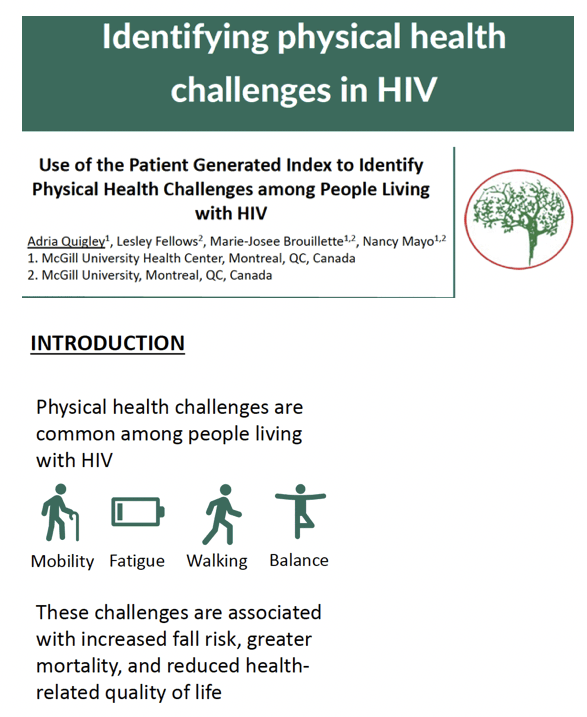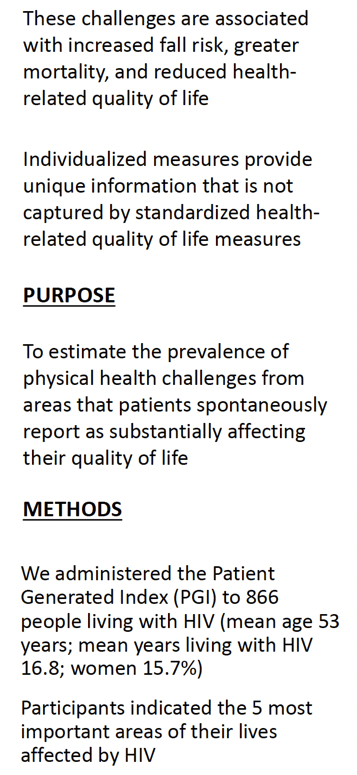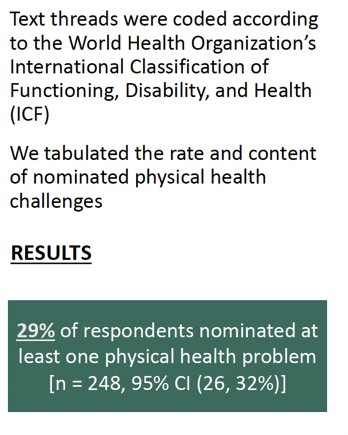 |
 |
 |
| |
Use of the Patient Generated Index to identify physical health challenges among people living with HIV
|
| |
| |
AIDS 2022 July 29-Aug 2 Montreal
Presenter
Adria Quigley
Authors
A. Quigley * (1), L. Fellows (2), M.-J. Brouillette (2), N. Mayo (2,1)
Institutions
(1) McGill University Health Centre, Montreal, Canada, (2) McGill University, Montreal, Canada
BACKGROUND: People living with HIV have more physical health challenges such as problems with fatigue, mobility, and gait relative to their HIV-negative counterparts. Physical health challenges have received little attention in the literature despite being associated with an increased fall risk, greater mortality, and reduced health-related quality of life. Other work has shown that individualized measures provide unique information that is not captured by standardized health-related quality of life measures. The purpose of this study is to estimate the prevalence of physical health challenges from areas that patients spontaneously report as substantially affecting their quality of life.
METHODS: The patient generated index (PGI), an individualized measure of health-related quality of life, was administered to 866 people living with HIV drawn from the Brain Health Now cohort across five sites in Canada. In the PGI, participants are asked to indicate, in their own words, the five most important areas of their lives affected by HIV. PGI text threads from their first visit were coded according to the World Health Organization's International Classification of Functioning, Disability, and Health (ICF). The rate and content of nominated physical health problems were tabulated.
RESULTS: The sample comprised 866 participants (mean age: 53; years with HIV: 16.8; women: 15.7%). The mean age of the participants was 53 years and the mean number of years living with HIV was 16.8 years.
PGI text threads were coded to 18 domains of the ICF. 248 [28.6%; 95% CI (25.6, 31.6%)] respondents nominated at least one physical health problem and 46 (5%) participants indicated two or more physical health problems. The most commonly nominated area was physical health unspecified (25% of total codes), followed by energy (22%), fatigue (11%), managing fitness (11%), endurance (7%), pain (5%), mobility (3.5%), sports participation (3%), effects of aging (3%), and walking (2%).
CONCLUSIONS: Physical health challenges are common among people living with HIV. By capturing what matters to the person, personalized health-related quality of life measures such as the PGI are well-suited to identify the unique physical challenges of people living with HIV and those potentially in need of a patient-centred rehabilitative approach.




|
| |
|
 |
 |
|
|